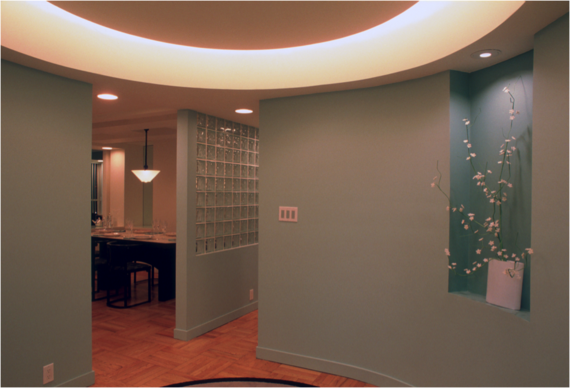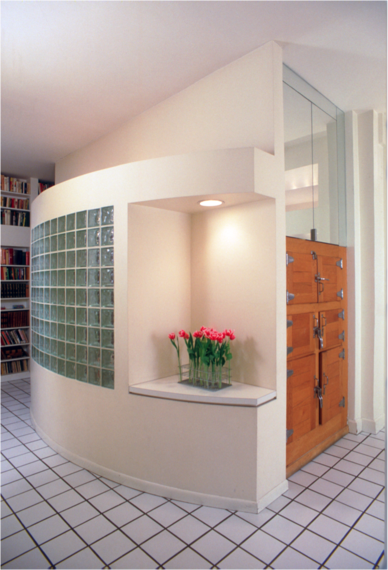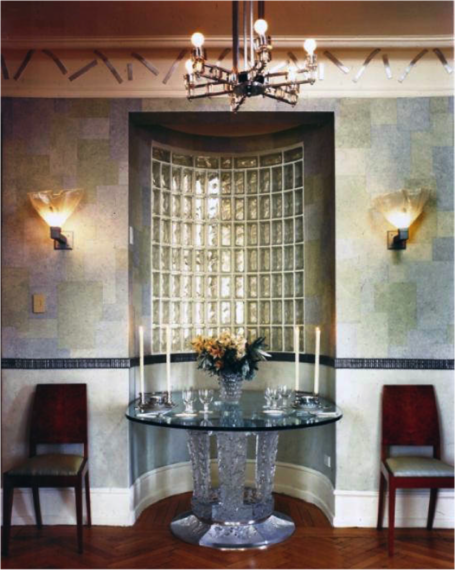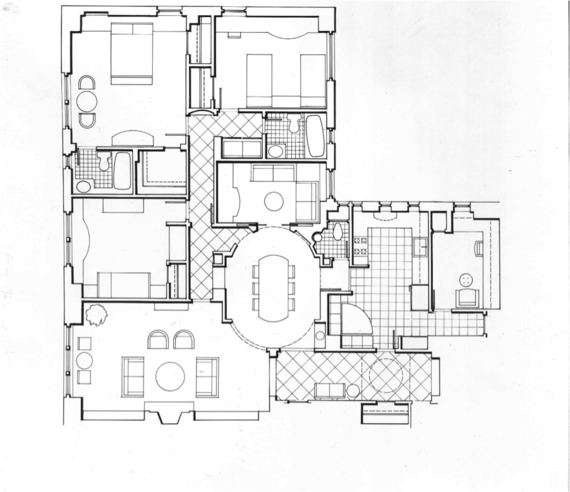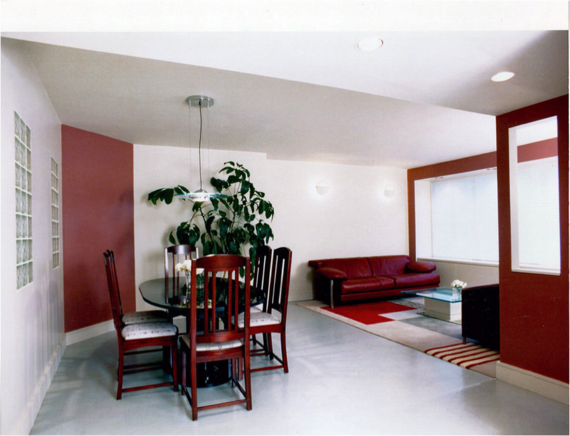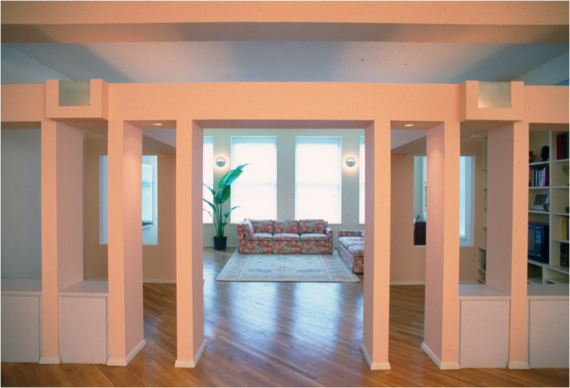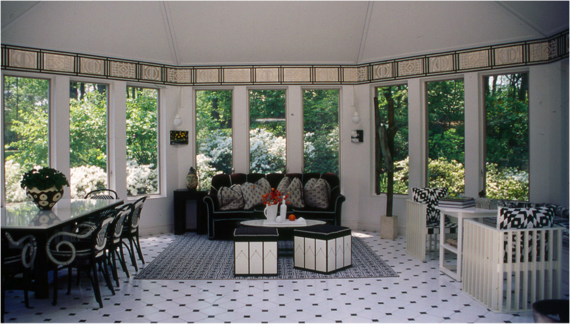Most rooms are composed of six straight walls: a floor and a ceiling, and four side walls all meeting at perpendicular angles. And while many architecture/design projects include gutting or demolishing some of these walls to create a more customized environment, the renovated spaces still tend to conform to what existed before: a lot of straight walls. Yet the beauty of sheetrock and other building materials is that they allow the designer to manipulate space in a more sculpted, interesting way. Spaces can be redesigned to become flowing, seductive, and innovative, suited to the specific needs and wants of their owner. In effect, the designer/architect dictates how circulation moves, instead of wall structures dictating people.
CREATE A CUSTOMIZED ENVIRONMENT
Introducing differently shaped rooms creates better circulation/flow and enhances a space's function, beauty, and ambience. By shaping a room in an individual way, a more proportionally sized room is created for that specific function. The following shapes are some of the more creative forms walls can incorporate: circular (rotunda-like), oval, semi-circular, partially curved, niched, splayed at different angles (80 degrees as opposed to 90), octagonal, and walls sliced by series of columns.
ADD CURVED WALLS TO A ROOM FOR A SCULPTURAL EFFECT
Round or curved rooms: The entry foyer can be a significant space where such sculptural effects are created. For example, in the entry below, the homeowner is led through a softly curved circulation path leading in multiple directions, separating the public from private spaces. This area, then, becomes both a visual and functional advantage. It also gives the person walking through the space a gracious feeling, as though they were in a special area, almost like a work of art.
Semi-circular/partially radiused rooms: These types of spaces are circular on one end and rectangular at the other. The soft radius tends to encapsulate some kind of niche, making it into a lovely destination point of added interest. This kind of shape is great for separating distinct functional areas: in one direction are the bedrooms, in the other the more public spaces.
Accent-curved walls: This type of wall is curved but then appendaged to a straight wall behind, so that it appears there is only a very slight connection between the two at where the curved wall is at its deepest.
Single curves / large wall size niches: Basically an architectural ornament, this sort of niche is larger in scale to smaller types set inside the wall.
Oval shaped rooms: Ovals are especially effective to break up circulation paths in a soft, flowing fashion. They are often used in between spaces.
CHOOSE A ROOM WITH SHARP ANGLES OR SLICES TO ADD VISUAL INTEREST
Pitched/Angled/Splayed walls: Highly effective in defining specific spaces for different types of functions, this wall uses a slightly irregular angle, 80 degrees for example, to delineate a specific function. A dining area may be distinguished from the rest of the living area by sculpting such a wall into a specific corner. Painting that splayed wall a different color from the rest of the room further differentiates that functional and aesthetic space from the remaining part of the living room.
Indented walls: Walls that have a slightly recessed plane--say 4 to 6 inches in from the surface plane--also make sculptural statements in a more subtle way. Here, one wall creates two planes by pushing part of the wall further into the plaster than the primary plane. The purpose for this, again, can be to distinguish different functions in a more interesting way.
Sliced walls/Series of narrow columns: Instead of one long solid wall, the sheetrock is pierced through at regular intervals. This creates open slices in the wall that allow peeks into the rooms beyond. While there still exists a full wall for all intents and purposes, the regular punctures give a much more open feel to the conjoining spaces.
Octagonal Rooms: More of an 18th Century look, the octagonal space allows a perfect background against which to place objets d'art. Like the round room, the octagonal one is fully enclosing, yet its angles make it easy to hang art and add windows. In addition, it provides an easy way of creating multiple functions of activity within a single space by simply defining each angled wall as doing something different.
UNIQUE WALLS ADD VALUE TO YOUR HOME
Curved, circular, oval, niched, spliced, sliced, angled, or accented, differently shaped rooms add great value to the homeowner in their unique and varied configurations. Adding both better circulation and flow, the custom sculpted space creates a more humanistic and positive approach to living.

